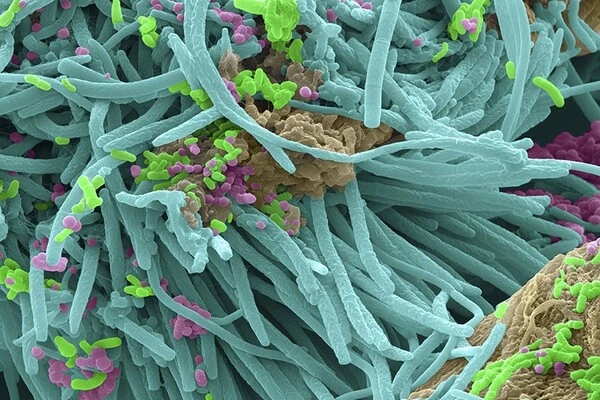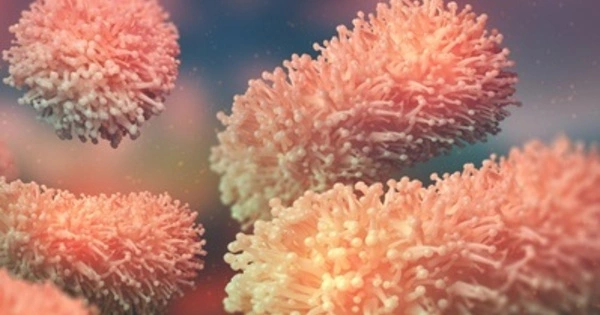According to new research, deep subsurface microbial communities can transform due to geological movements rather than being influenced solely by environmental conditions. The findings contribute to our understanding of subsurface microorganisms, which account for up to half of all living material on Earth.
Microscopic organisms live in vast bedrock pores and veins in the deep subsurface, which extends for miles into the Earth. Belowground microorganisms, or microbes, make up to half of all living material on the planet and are essential to the survival of all life forms higher up the food chain. They are critical for achieving an environmentally sustainable future because they have the ability to change the chemical makeup of minerals, break down pollutants, and change the composition of groundwater.
While the importance of bacteria and archaea cannot be overstated, the only evidence of their presence in the deep subsurface is traces of biological material that seep through mine walls, cave streams, and drill holes that tap into aquifers.
Many scientists believe that the composition of deep subsurface microbial communities is primarily shaped by local environmental pressures on microbial survival such as temperature, acidity, and oxygen concentration. In slow-growing communities like the subsurface, this process, known as the environmental selection, can take years to millennia to produce significant community-level changes.
One of the additional pieces of information from this microbiology study is that we’ve seen populations of microbes that have moved not just directly from place to place, but as a consequence of the network in between.
Roland Horne
Stanford University researchers have shown that deep subsurface microbial communities can change in a matter of days, and that the changes can be driven by geological activity rather than just environmental pressures. The findings were published last month in the Proceedings of the National Academy of Sciences (PNAS).
“In the deep subsurface, we can no longer understand environmental selection to be the dominant driver in community dynamics — it could just be a changing flow rate or movement of groundwater through the crevices and cracks in the subsurface that’s driving what we see,” said lead study author Yuran Zhang, Ph.D. ’20, who conducted the research as a Ph.D. student in energy resources engineering.
Filling in gaps
Previous research on deep subsurface microbes has only provided glimpses into their existence, much like reading a random page of someone’s 1000-word biography. The Stanford researchers demonstrated how these populations can change over space and time by collecting water samples from multiple geothermal wells weekly for ten months, demonstrating the first evidence of geological activity as a driver of microbial community change – and thus evolution.

“There has been previous research on the composition of microbial communities in the deep subsurface, but it almost always uses samples from a single time point,” said senior study author and assistant professor of Earth system science geomicrobiologist Anne Dekas. “Having a time series over 10 months, especially at a weekly resolution, gives us a really different perspective that allows us to ask different questions about how and why these communities change over time.”
While microbial ecologists might have suspected geological activity was at work, Dekas was surprised by the magnitude of community shifts that occurred after a change in the flow network.
Boreholes and test tubes
The study’s technique involved processing samples from a flow test at the Sanford Underground Research Facility (SURF), formerly the Homestake Gold Mine in South Dakota. Moving from a borehole sample setting to a test-tube-filled lab with a PCR machine on campus, according to Zhang, was “like connecting two totally different worlds,” referring to how this work connects the distinct fields of microbial ecology and geothermal engineering.
The researchers discovered microbial DNA fingerprints while analyzing the properties of the water samples. Tens of thousands of unique sequencing IDs were provided by each of the 132 water samples. Those data were used to show that when geological activity occurred, it could quickly mix disparate biological communities — and from locations that weren’t previously known to be connected.
“One of the additional pieces of information from this microbiology study is that we’ve seen populations of microbes that have moved not just directly from place to place, but as a consequence of the network in between,” said senior study author Roland Horne, the Thomas Davies Barrow Professor of Earth Sciences. “That’s so important from the reservoir point of view because it reveals something that isn’t revealed by normal geothermal analytical methods.”
Geology meets biology
The amount of data collected by current geothermal techniques is equivalent to only having access to highways that are disconnected from side roads that will take you all the way home. Horne believes that studying microorganism populations will allow him to better map the complex intricacies of the deep subsurface.
The ability to use biology as a tool could lead to new insights into the deep subsurface as a frontier for geological storage, such as nuclear waste and carbon sequestration. However, combining biology and geology necessitates a solid understanding of both subjects.
“On the geothermal underground project, I realized that reservoir engineers or geologists or geophysicists usually aren’t that familiar with microbiology,” said Zhang, who was co-advised by Horne and Dekas. “There is common knowledge about geochemistry, but not so much in geomicrobiology.”
This work may have significance beyond Earth-based disciplines: If some of the Earth’s oldest life forms can change and diversify as a result of geological activity, we might be able to have similar expectations for the origin and diversification of life on other tectonic planetary bodies.
“What we see may be related to the early story of life’s evolution,” Zhang said. “If geological activity is a driving force in the formation or diversification of early life, then perhaps we should look for extraterrestrial life on geologically active planets.”





